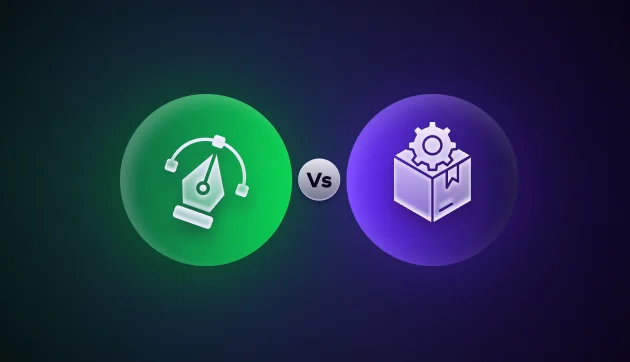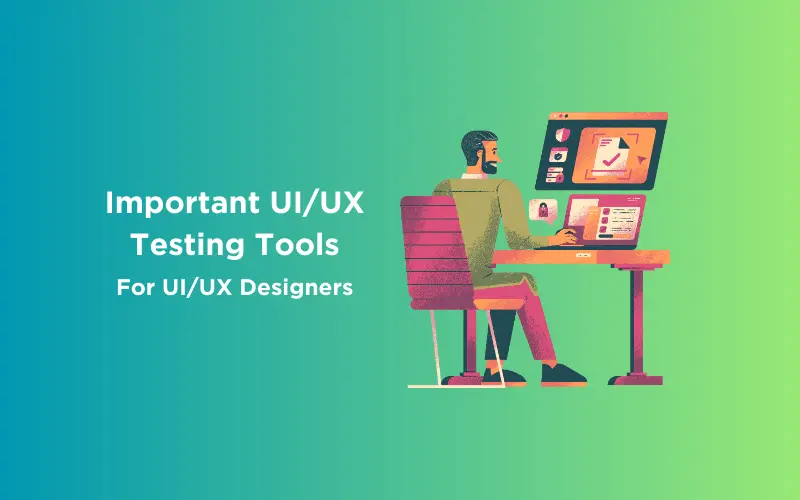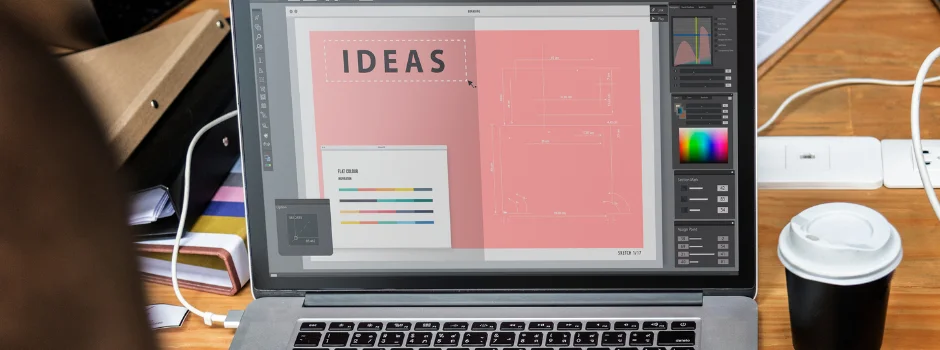![How to Get Rewarding UI/UX Jobs? [2025] 1 Post thumbnail](https://www.guvi.in/blog/wp-content/uploads/2023/12/Feature-image-How-to-Get-Rewarding-UIUX-Jobs.webp)
How to Get Rewarding UI/UX Jobs? [2025]
Jan 16, 2025 6 Min Read 1967 Views
(Last Updated)
In the ever-evolving landscape of technology, the demand for skilled professionals in UI/UX design is skyrocketing. The field of UI/UX promises not just a job but a rewarding career for those who can seamlessly blend aesthetics with functionality.
Are you intrigued by the prospect of creating digital experiences that attract users? Do you aspire to be part of a dynamic and innovative industry? If so, you’re in the right place.
In this blog, we’ll delve into the intricacies of securing UI/UX jobs. From understanding the fundamentals to navigating the competitive job market, this article aims to equip you with the knowledge and strategies needed to excel in the field of UI/UX design.
Table of contents
- Steps Involved in Securing UI/UX Jobs
- Develop Your Skills
- Build a Strong Portfolio
- Start Networking
- Be Proficient in UI/UX Design Tools
- Gain Relevant Education and Certifications
- Keep Up with the Design Trends
- Grab Internship Opportunities, Real-life projects & Freelance Gigs
- Build a Strong Online Presence
- Apply for Jobs that match your skill level
- Top UI/UX Jobs and Their Salaries
- UI Designer
- UX Designer
- Usability Analyst
- Visual Designer
- Interaction Designer
- UI Developer/Front-End Developer
- UI Architect
- Information Architect
- UX Researcher
- Content Strategist
- Wrapping Up
- FAQs
- How do I get my first UI UX job?
- Is a degree necessary for a career in UI or UX design?
- Is Coding necessary for UX designers?
- Are there certifications for UI or UX design?
- Should I study UI or UX first?
Steps Involved in Securing UI/UX Jobs
Getting UI/UX jobs requires a combination of skills, education, networking, and a strong portfolio.
As we proceed to the next phase, make sure you understand the fundamentals of UI/UX, which includes heuristic analysis, journey maps, testing, etc. If you want to explore more about it, join GUVI’s UI/UX Course with placement assistance. You’ll also learn about the tools used in UI/UX which are AdobeXd, Illustrator, Photoshop, Figma, and many more. Build some amazing real-time projects to get hands-on experience.
Instead, if you would like to explore Figma through a Self-Paced course, try GUVI’s Figma certification course.
Here are some steps you can take to increase your chances of securing a UI/UX job:
1. Develop Your Skills
For a creative field like UI/UX, possessing the right skill set is crucial. To qualify as a UI/UX designer and bring your creative design ideas to life, you should improve the following technical and soft skills:
User Research Skills
UX designers must be skilled in user analysis methods such as surveys, interviews, and usability testing to gather insights into user behaviors, preferences, and pain points.
User-centric Design
Keeping the end-user at the forefront of the project is significant while designing a user interface. A UI designer must prioritize the needs and preferences of the end-users, understanding user behaviors, conducting user research, and incorporating feedback into designs are essential aspects of creating user-centric interfaces.
Coding Skills
A basic understanding of front-end development programming languages like HTML, CSS, and JavaScript is a valuable asset for UI designers. This enables better collaboration with developers and ensures the feasibility of design concepts by allowing a smoother transition from design to development.
Wireframing and Prototyping
Proficiency in creating wireframes and prototypes is essential for visualizing and testing design concepts. Sketch, Figma, or Adobe XD are the commonly used wireframing and prototyping tools to bring design ideas to life before implementation.
Storytelling
UX designers need to be persuasive storytellers, conveying the user journey and design decisions to stakeholders. They should interact and engage users with interactive storytelling by offering exceptional user experiences.
User Empathy
Designers should understand the user’s perspective and empathize with their needs and challenges. Empathy ensures that designers create solutions that genuinely address user pain points.
Communication & Collaboration
Effective communication is essential for collaborating with cross-functional teams, including developers, UX designers, project managers, and other stakeholders.
Problem-Solving Skills
UI designers often encounter challenges. So, being able to analyze problems, think critically, and find creative solutions is a valuable skill in this field.
Analytical skills
A UI designer should perform usability testing, monitor data on product usability, and find ways to improve existing products while using data to infer new product ideas.
Learn More: 10 Skills Required to Become a UI/UX Designer
2. Build a Strong Portfolio
Your portfolio is proof of your practice projects and a showcase of your creativity. Assemble a collection of your best work, including projects that highlight your skills in both UI and UX. A well-crafted portfolio is often the key to securing your first UI/UX design role.
Additionally, it also describes your personal growth as a UI/UX designer. It depicts your proficiency in everything you’ve already learned. A well-organized and visually appealing portfolio helps designers stand out to potential employers or clients, providing a tangible representation of their expertise and creativity.
Regularly update it with new projects as you learn new design techniques. Ensure that it communicates your design journey effectively, making it an indispensable tool for networking and securing job opportunities in the competitive design industry.
3. Start Networking
Networking is a golden card for acquiring UI/UX jobs. Engage with the UI/UX community through online forums, social media, and local meetups. Connecting with professionals in the field can open doors to mentorship, job opportunities, and valuable insights.
4. Be Proficient in UI/UX Design Tools
Proficiency in industry-standard design tools helps beginners get in pace with their UI/UX jobs. Familiarize yourself with tools like Adobe XD, Sketch, or Figma, and stay updated on their shortcuts, efficient usage, and latest features. Practical knowledge of these tools will be indispensable in your daily routine as a UI/UX designer.
5. Gain Relevant Education and Certifications
Acquiring the knowledge of necessary UI/UX skills from industry-led experts is crucial for gaining UI/UX jobs. Gaining certifications from reputable companies will be proof of your expertise and achievements. Sign up for UI/UX Bootcamp, workshops, and full-length online courses that will help you break the barriers to becoming a UI/UX designer. The journey of acquiring certification and skill upgradation will be key to acquiring UI/UX jobs.
6. Keep Up with the Design Trends
The world of design is ever-evolving. Follow subject-matter experts, industry-related blogs, podcasts, and webinars, and immerse yourself in design publications to stay aware of the latest trends. Adapting to new design trends showcases your commitment to delivering cutting-edge solutions to the employer you interview with.
Know About Top UI/UX Design Trends: Embracing Innovation in 2025
7. Grab Internship Opportunities, Real-life projects & Freelance Gigs
Practical experience is invaluable in UI/UX design. Seek internships or freelance projects to apply your learnings and skills in real-world design scenarios. It is a chance to learn from your mistakes and discover your strengths and weaknesses. This hands-on experience will enhance your problem-solving abilities and build your professional confidence.
Freelance gigs are so popular among UI/UX professionals as it is different from conventional working styles and boosts creativity. Internship opportunities provide you with industry exposure and enhance your employability score as a UI/UX professional.
By engaging in personal projects, such as redesigning websites, creating mobile app concepts, or designing user interfaces for specific industries, designers can hone their skills and experiment with different design approaches.
Projects allow designers to tackle various problems, consider user needs, and iterate on their designs, allowing you to learn better. Additionally, each personal project is a lesson that provides an opportunity to build a diverse portfolio to showcase a range of design styles and problem-solving abilities.
8. Build a Strong Online Presence
Joining online communities and UI/UX design forums can boost networking and provide opportunities for feedback. Feedback is a great way of learning from your peers and co-learners.
Create and share your design projects, engage in discussions, and learn from the experiences of fellow designers. Building a strong online presence is not only a learning experience but also a step toward establishing your identity in the design community.
9. Apply for Jobs that match your skill level
Apply for UI/UX jobs that match your preferences and skill level. Perform detailed research about the industry, specific companies, and their competitors before appearing for the interview. Industries hire UI/UX designers who not only possess the necessary skills but also exhibit the qualities needed to excel in a collaborative and dynamic design environment.
Explore Top 12 Career Opportunities for UI/UX Design
Top UI/UX Jobs and Their Salaries
The UI/UX field is very competitive and there are infinite UI/UX jobs that are highly looked forward to by aspirants. Here are the top UI/UX jobs and their respective salaries:
UI Designer
The UI designer is responsible for creating the visual elements of the user interface, including layout, color schemes, typography, and interactive elements. They develop visually engaging and consistent designs that align with the overall user experience and brand identity.
| Average annual salary : INR 5.7 LPA
UX Designer
The UX designer is responsible for the overall user experience, focusing on understanding user needs, conducting research, and designing solutions that meet those needs.
They conduct user research, create personas, design wireframes, and prototypes, and collaborate with cross-functional teams like the UI design team to ensure a user-centric design.
| Average annual salary : INR 9.5 LPA
Usability Analyst
A Usability Analyst prioritizes evaluating the usability and user experience of the UI through testing and analysis. They conduct usability testing, gather user feedback, and provide insights to improve the design’s overall usability and effectiveness.
| Average annual salary: INR 10 LPA
Visual Designer
A Visual Designer focuses specifically on the visual aspects of the UI, emphasizing aesthetics, branding, and overall design cohesion. They contribute graphics, icons, and other visual elements that contribute to the overall look and feel of the interface.
| Average annual salary: INR 7.5 LPA
Interaction Designer
An Interaction Designer focuses on designing interactive elements and the overall user flow within the interface. They refine the user journey, ensuring that interactive elements are intuitive, and user-friendly, enhancing the overall user experience.
| Average annual salary: INR 8 LPA
UI Developer/Front-End Developer
A UI Developer/Front-End Developer Translates UI designs into code, ensuring that the visual elements are accurately executed in web applications or other digital products. These professionals collaborate with UI designers to address technical considerations for responsive design and cross-browser compatibility.
| Average annual salary: INR 7.5 LPA
UI Architect
UI Architect fetches a holistic view of the UI design, considering the overall structure, organization, and scalability of the interface. He/she defines the architecture of the UI, ensuring that it meets current and future requirements for a seamless user experience.
| Average annual salary: INR 23.5 LPA
Information Architect
The role focuses on organizing and structuring information within the product to create a logical and user-friendly architecture. Generally, an Information architect generates sitemaps, user flows, and taxonomies to improve content organization and navigation.
| Average annual salary: INR 21.3 LPA
UX Researcher
UX Researcher specializes in user research to gather insights into user behaviors, preferences, and pain points. He or she is responsible for conducting surveys, interviews, and observational studies to inform design decisions and ensure they align with user needs.
| Average annual salary: INR 10 LPA
Content Strategist
A content strategist creates and manages content to ensure it aligns with the overall user experience and business objectives. He/she creates content plans, sets up tone and voice, and ensures content meets user needs and expectations.
| Average annual salary: INR 7.2 LPA
Read: The Future and Scope of UI/UX Design: A Comprehensive Overview
Wrapping Up
The world of UI/UX design is blooming with opportunities for those with a passion for creating seamless and delightful user experiences. They are already on the path of exploration and advancement when it comes to bringing in the right talents onboard to offer user-friendly products and services.
Professionals in these fields have a higher chance to shape the digital landscape, create meaningful user experiences, and contribute to the success of innovative products and services. Mastering the fundamentals, building a strong portfolio, keeping up with design trends, engaging in real-world opportunities, and understanding the diverse salary scope of UI/UX jobs are key steps toward a successful career in this field.
We hope you’ve gained interesting insights on UI/UX jobs through this blog. What challenges have you faced in pursuing a UI/UX career? What was your way of tackling them? Let us know in the comments below.
Also Read | How to Become a UI/UX Designer in India [2025]
Kickstart your UI/UX journey by enrolling in GUVI’s UI/UX Course where you will master technologies like AdobeXd, Illustrator, and Figma, and build interesting real-life UI/UX projects.Alternatively, if you would like to explore Figma through a Self-Paced course, try GUVI’s Figma certification course.
FAQs
1. How do I get my first UI UX job?
To land your first UI/UX job, build a strong foundation in the basics of UI/UX, develop your skills, build a strong portfolio, seek an internship or freelance opportunity, and stay updated with trends.
2. Is a degree necessary for a career in UI or UX design?
While a degree can be beneficial, many UI or UX designers enter the field through self-learning, workshops, and practical experience. In this field, a strong portfolio is often more crucial than a formal degree.
3. Is Coding necessary for UX designers?
While coding is not compulsory for UX designers, having a basic understanding of HTML, CSS, and JavaScript can be beneficial for effective communication with stakeholders, especially developers.
4. Are there certifications for UI or UX design?
Yes, there are various certifications available for UI and UX design, even GUVI offers a certified program to master UI/UX with assured job placement assistance and easy EMI options.
5. Should I study UI or UX first?
Both UI and UX are related, but it’s advisable to start with UX. Understanding the user’s needs, behaviors, and interactions lays a solid foundation for creating effective interfaces. Once you grasp UX principles, diving into UI design becomes more meaningful and user-centric. Prefer a course that teaches both.


















Did you enjoy this article?